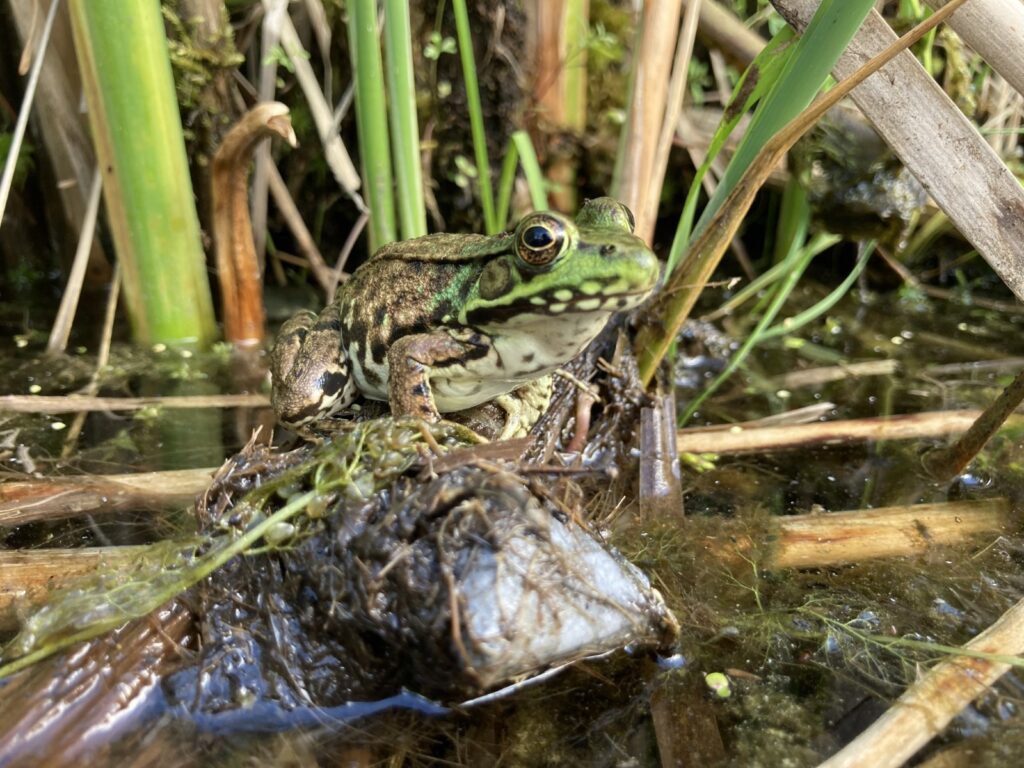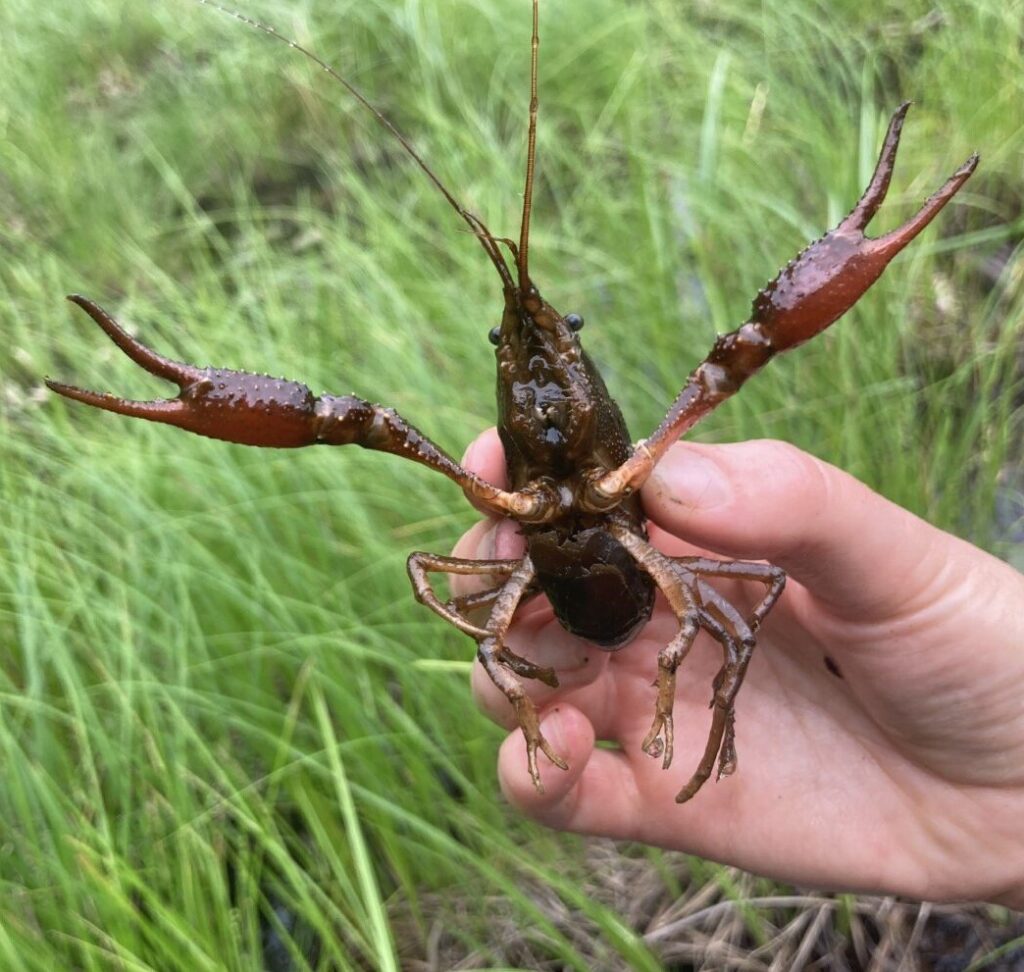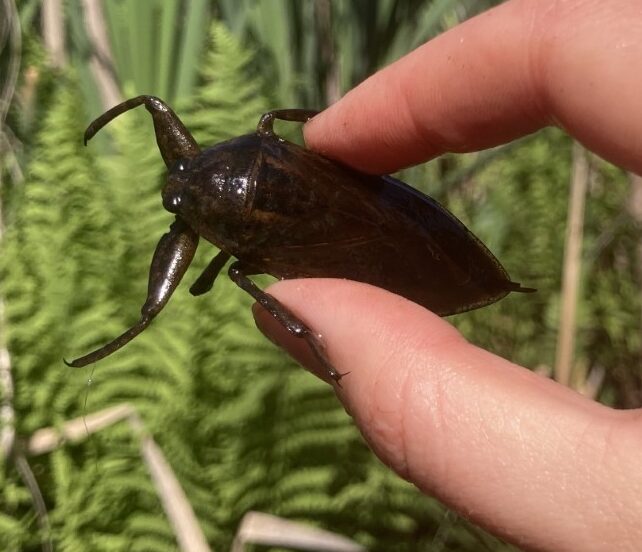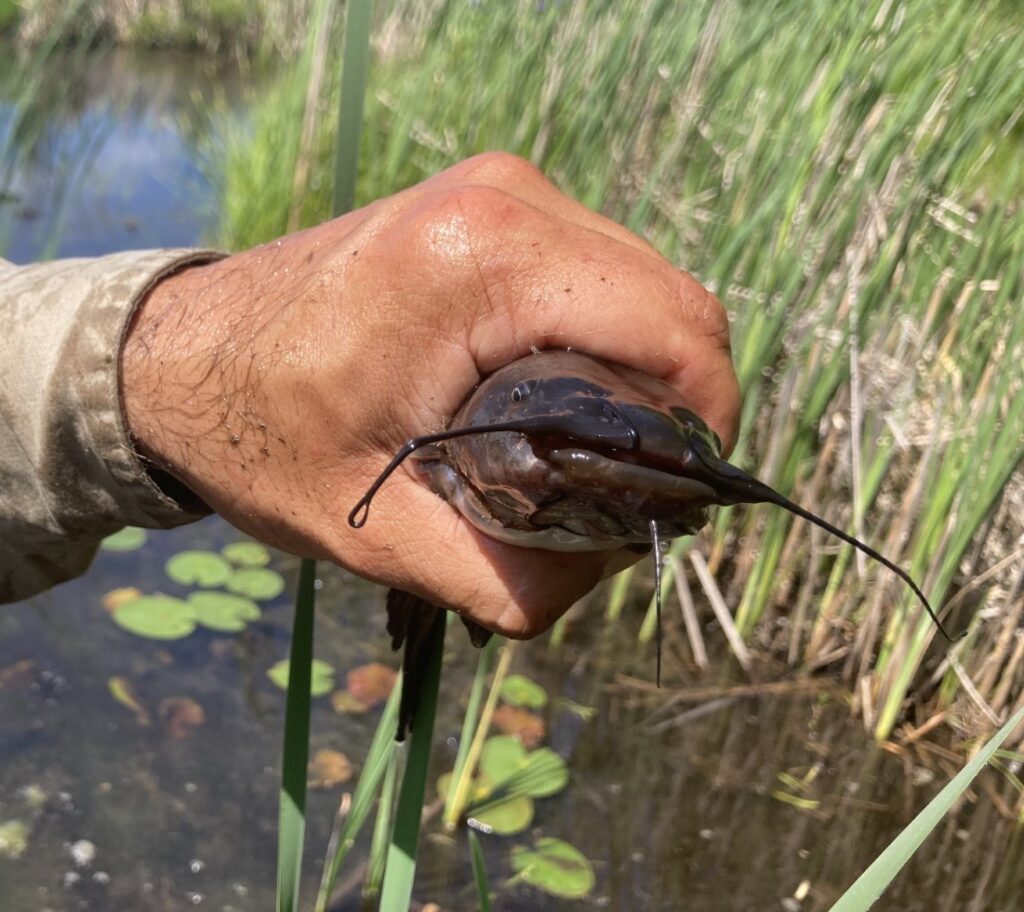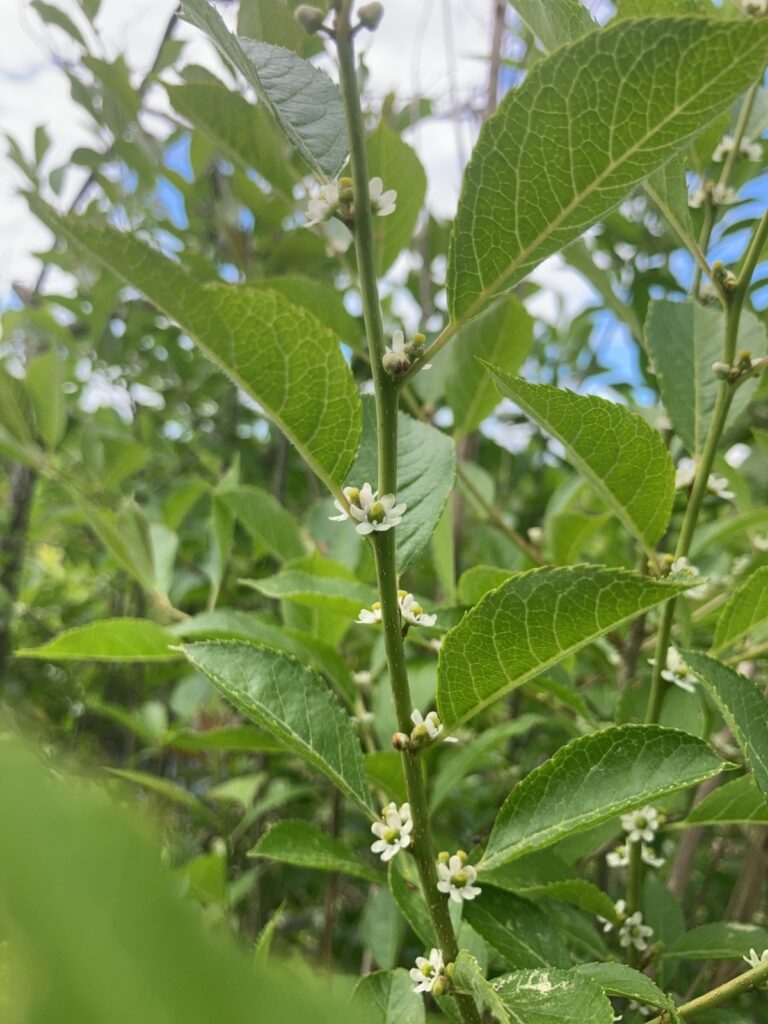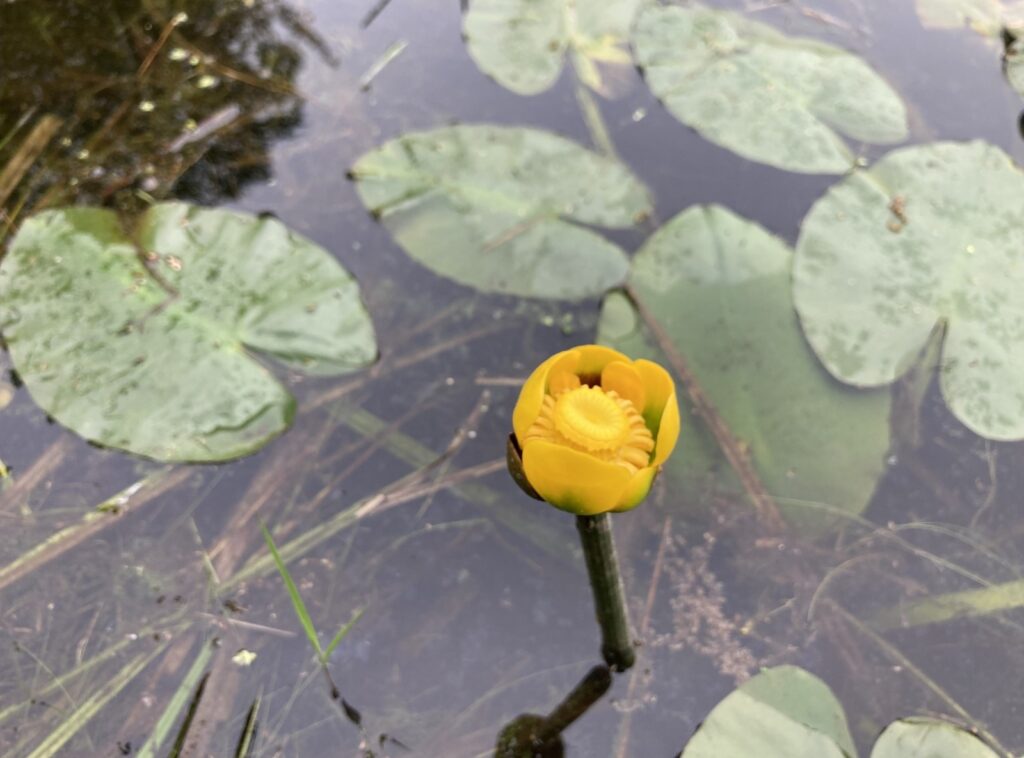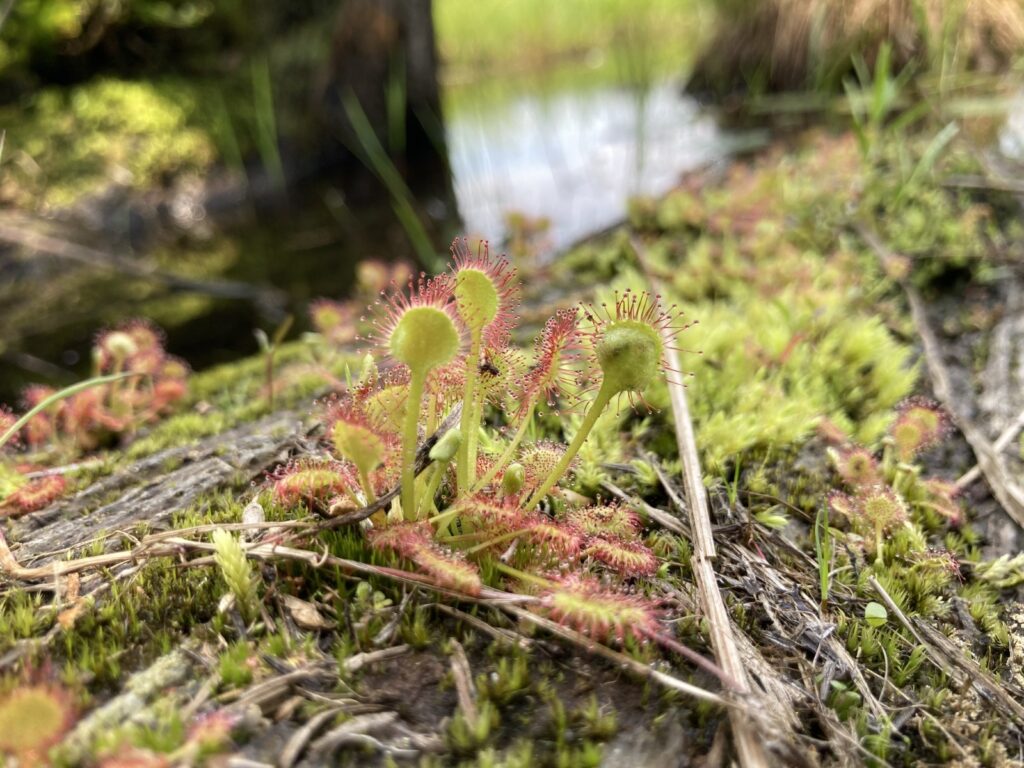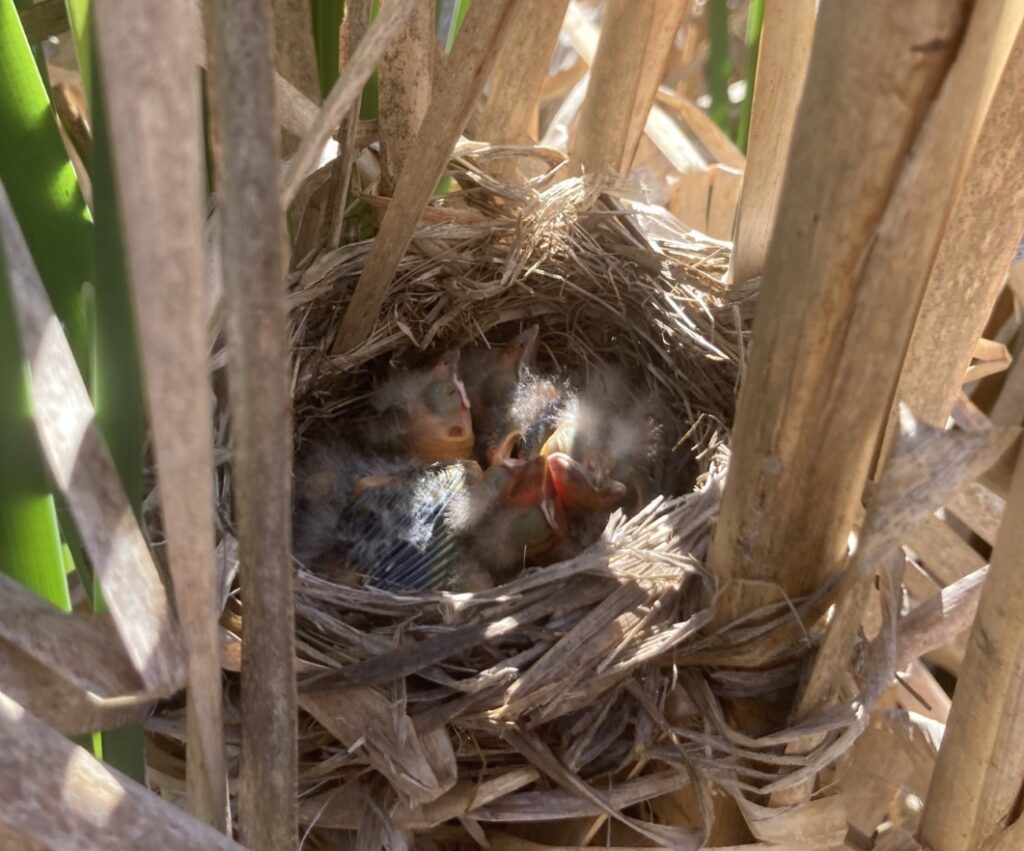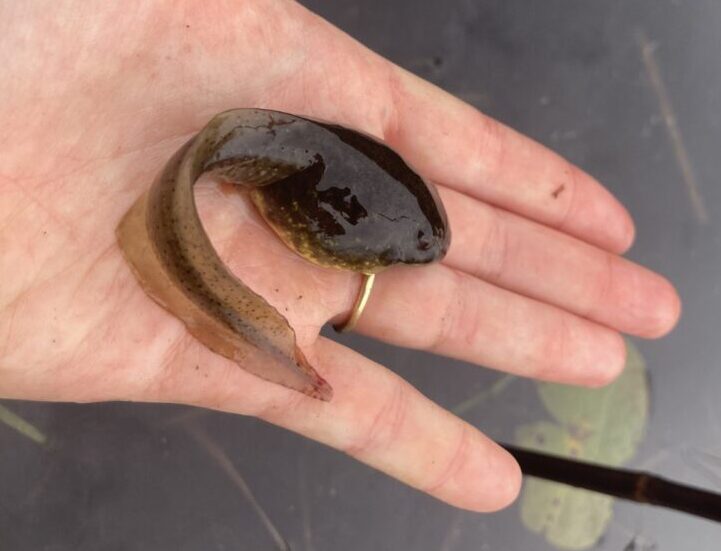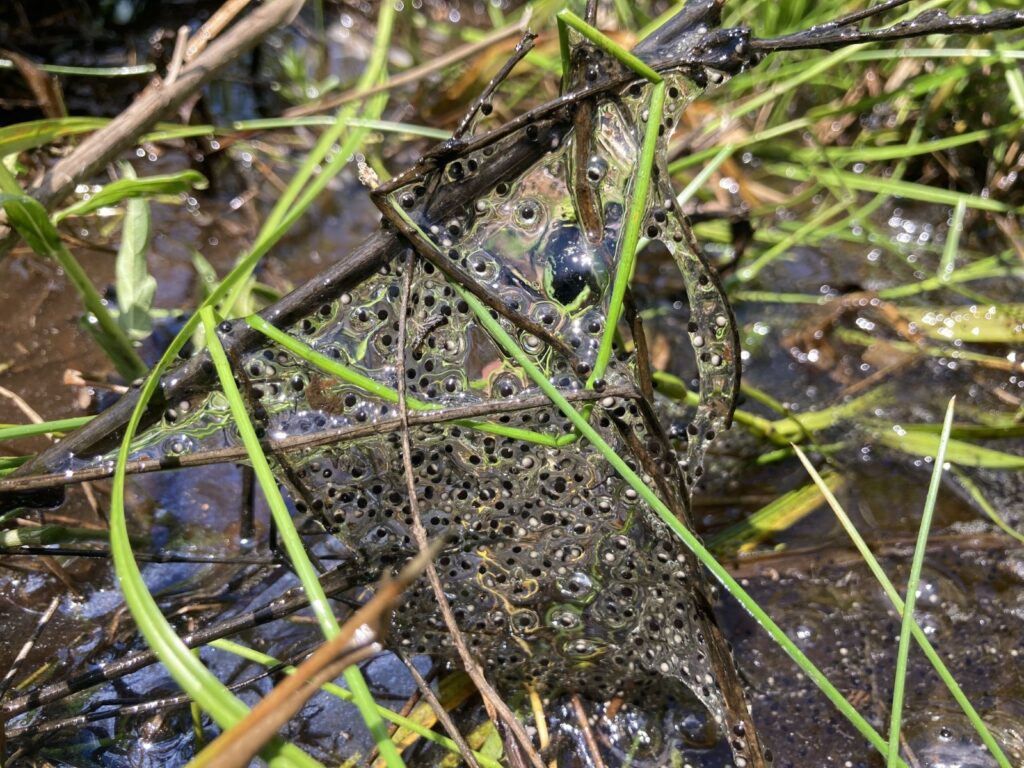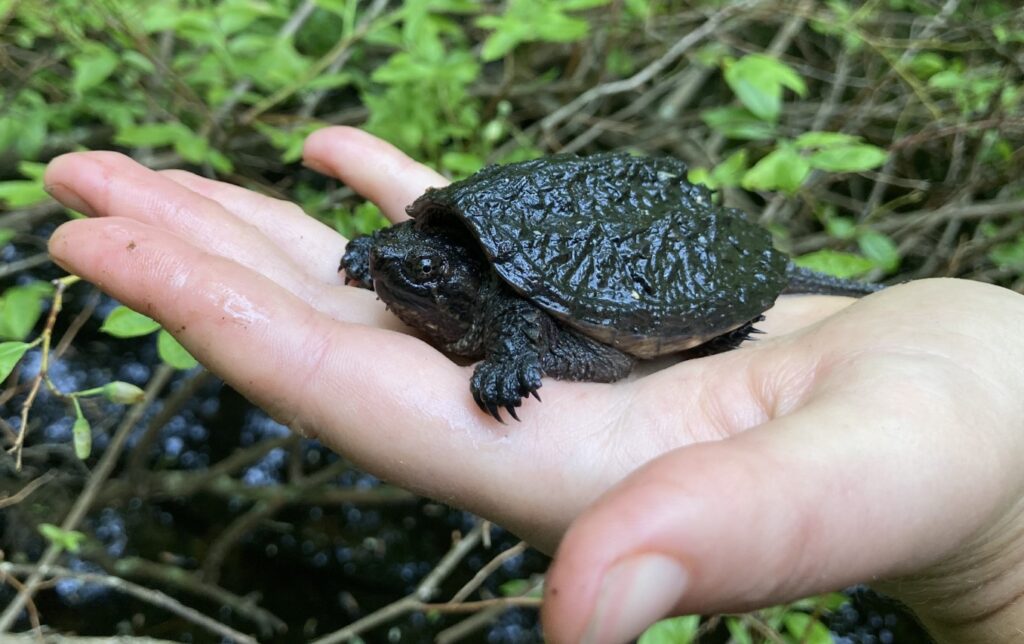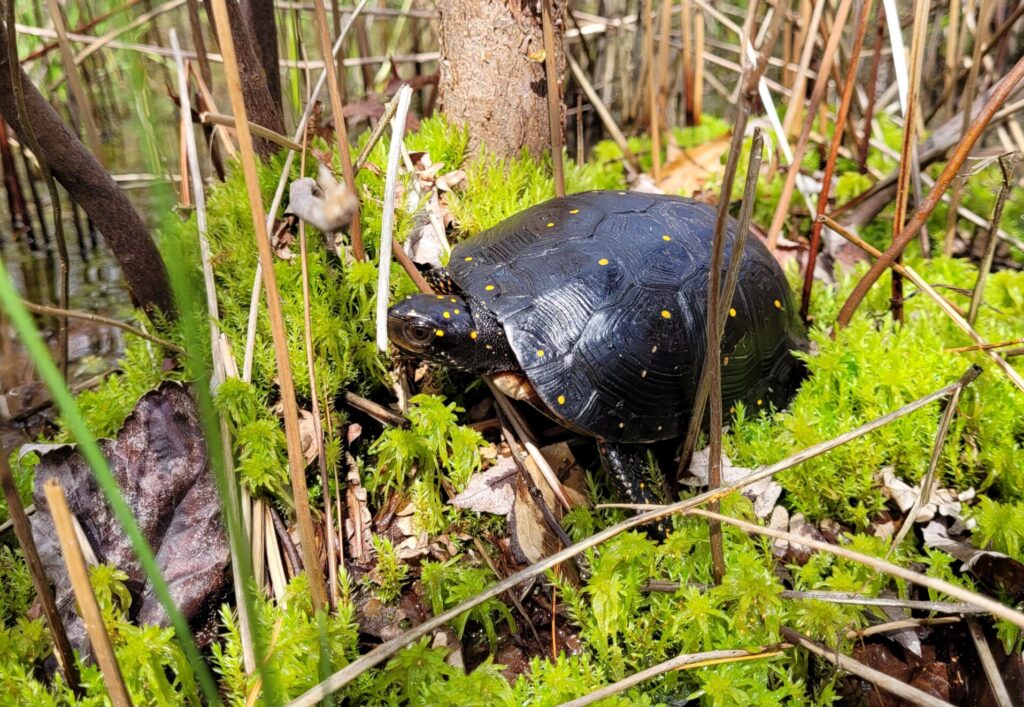
You pick up a peculiar scent in the marsh today. Delicious, you muse with interest, and the thought sets your turtle-tummy a-rumbling. Bright yellow dots adorn a smooth carapace, and this pretty turtle shell glides just under the surface of the water as you paddle towards the source of decadence. Just another day in the life of a Spotted turtle on the look-out for the next meal at Lowell-Dracut-Tynsboro (LDT) State Park.
Clawing past the green sedges, you hardly notice entering a tunnel of light netting because – there! There it is! It’s a tin of… sardines? What luck! And it is wafting out the most oily, attractive smell. You are basking in this yumminess when suddenly you find yourself hefted out of the water and looking eye-to-eye with a swampy field researcher in waders.
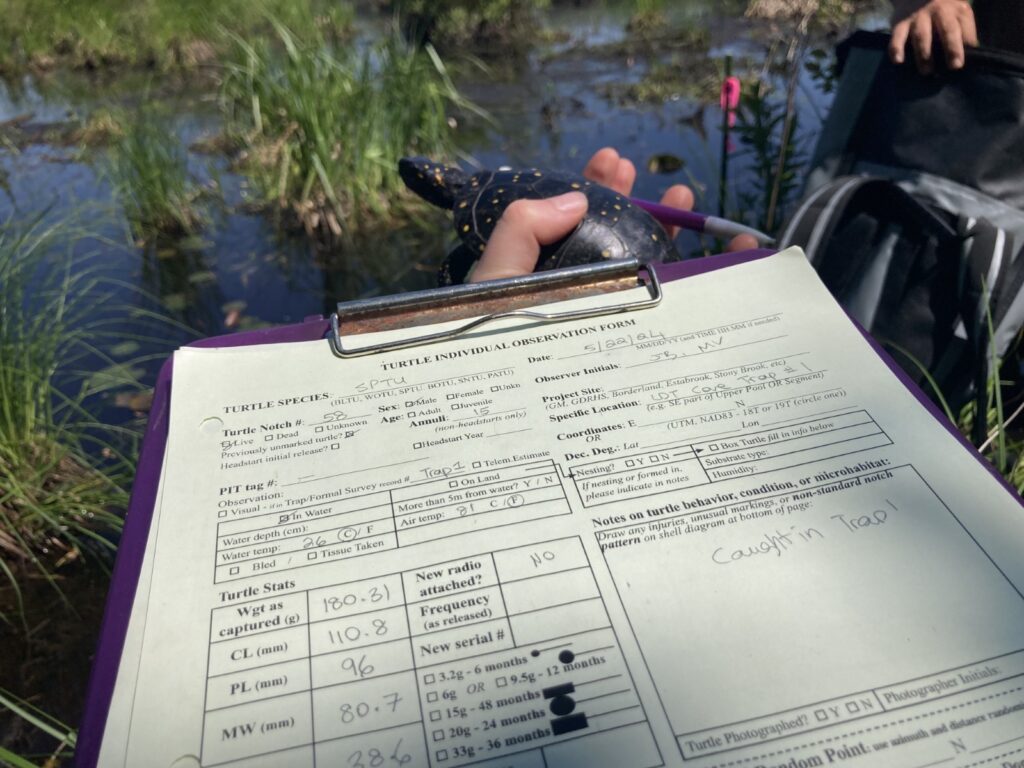
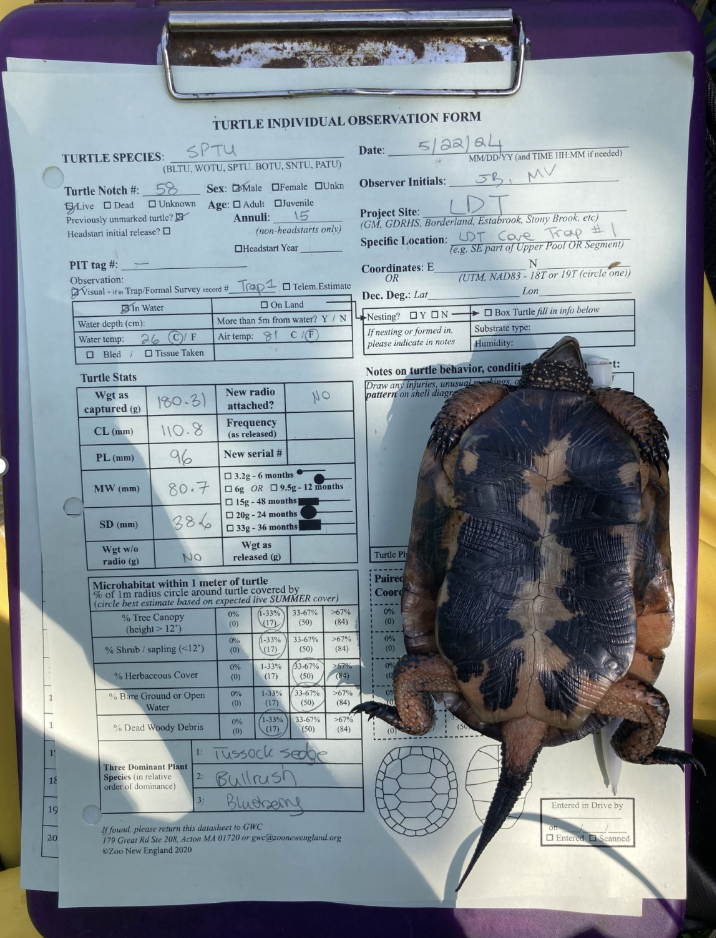
Oh yes, this again, you sigh and realize that you have found yourself in a passive turtle trap. It’s simple to get into the cylindrical passive-trap that floats in the water, but not so simple to get back out. The researchers deftly collect data on you including your weight, shell measurements and taking pictures of your uniquely patterned plastron.
It’s not long before you gently glide back into the swampy waters, with a couple of researchers cheering for you and wishing you luck until the next time you meet again. The sardine oils slide off your shell, and you are already on the look-out for the next snack. You might not realize it, but you are part of an important population study of Spotted Turles at Lowell-Dracut-Tynsboro State Park!
The Spotted Turtle Project at Lowell-Dracut-Tynsboro (LDT)
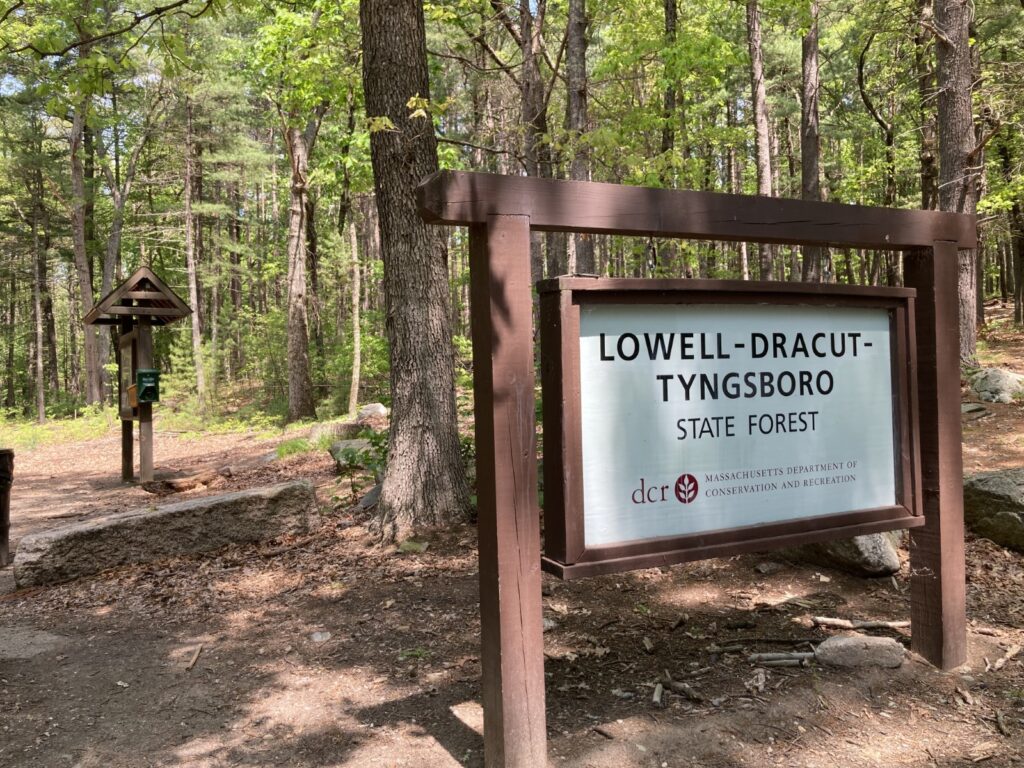
For the last two weeks of May, John Berholtz and I visited Lowell-Dracut-Tynsboro State Park nearly every day.
We suited up in our trusty chest waders and set about checking the passive turtle traps which we baited with tinned sardines.
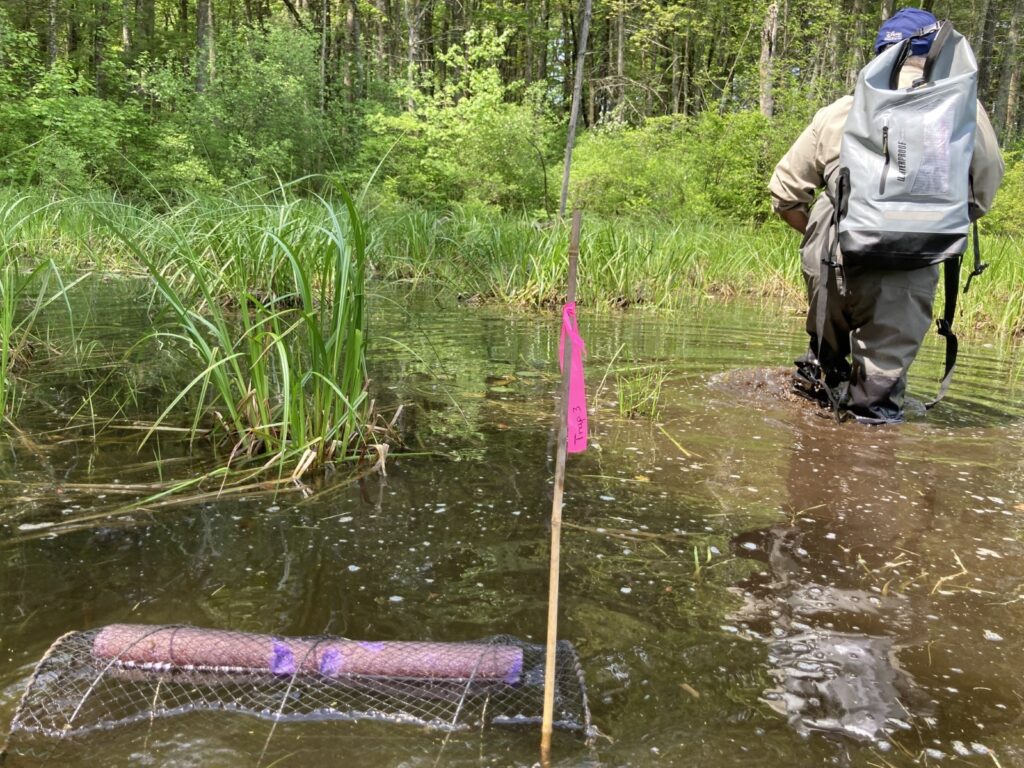
This trapping effort was the start of a project at the Conservation Department assessing the population of Spotted Turtles (Clemmys guttata) at LDT and assessing how female Spotted Turtles make use of the marsh landscape for nesting purposes. Ultimately, this information can be useful in management decisions and practices of wetlands in this species’ range and this research is conducted in partnership with the U.S Department of Defense and the Smithsonian Institute.
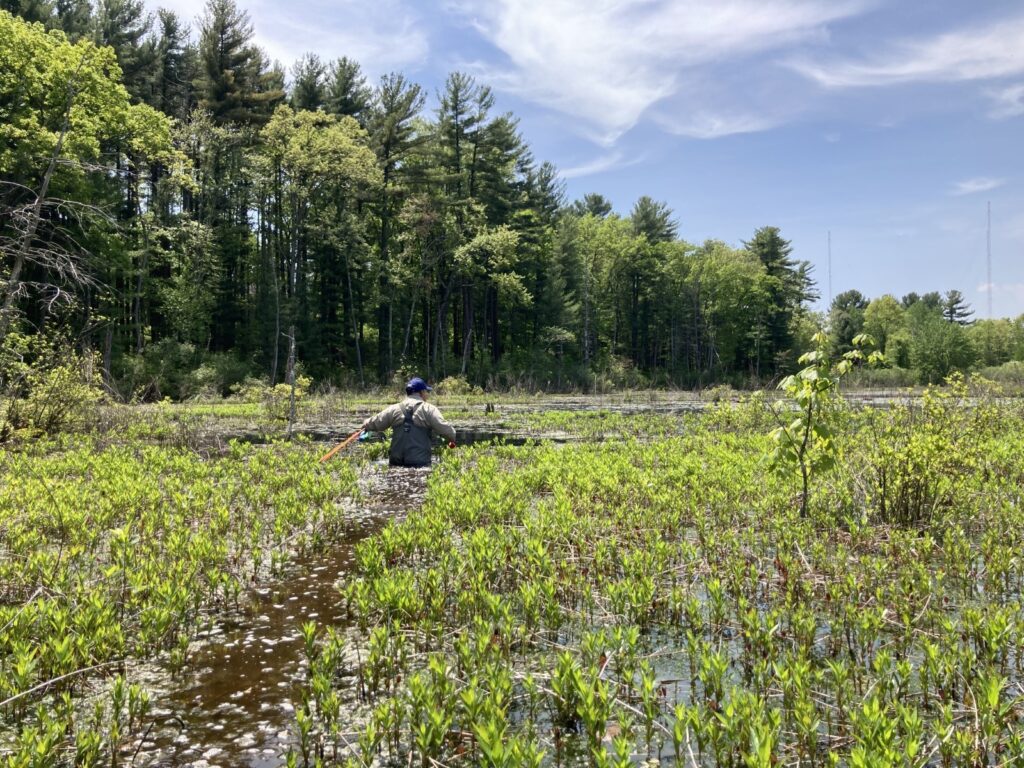
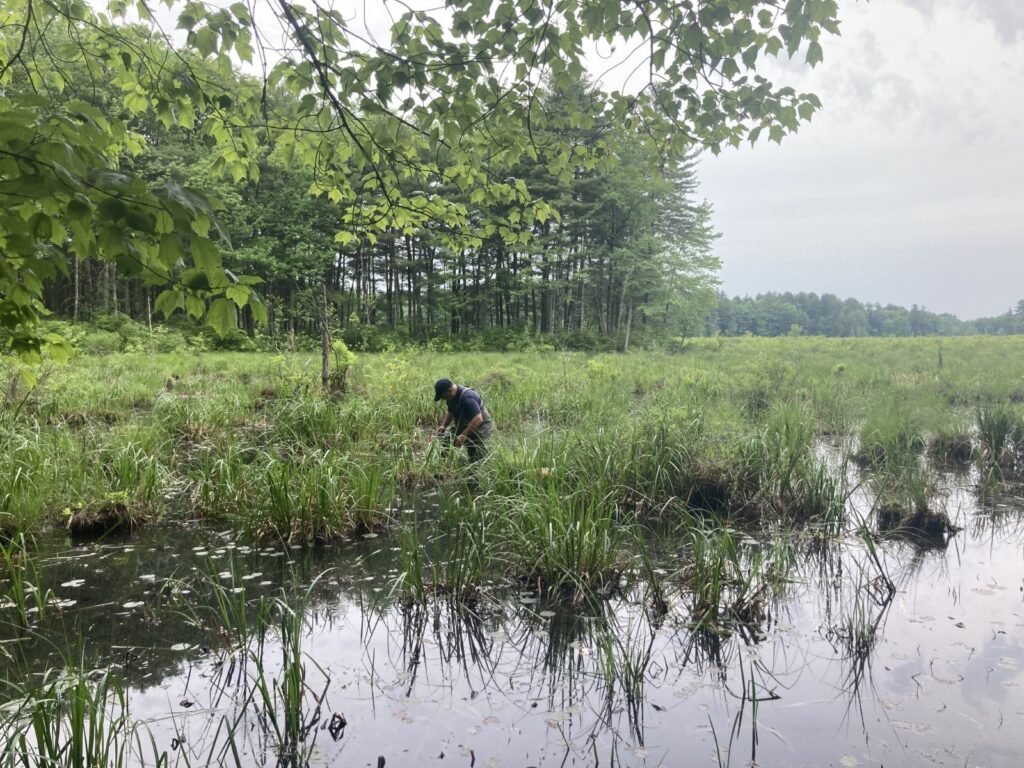
Nothing makes fieldwork more fun than company, and during our trapping period, we had the enormous pleasure of guests joining us a couple of times.
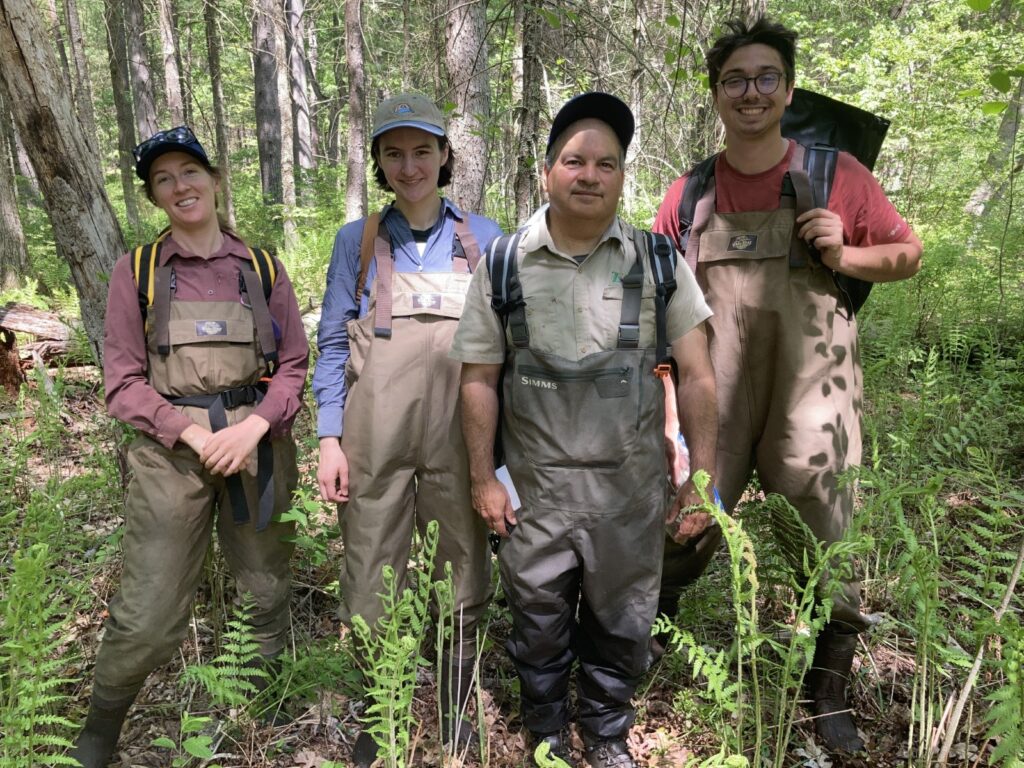
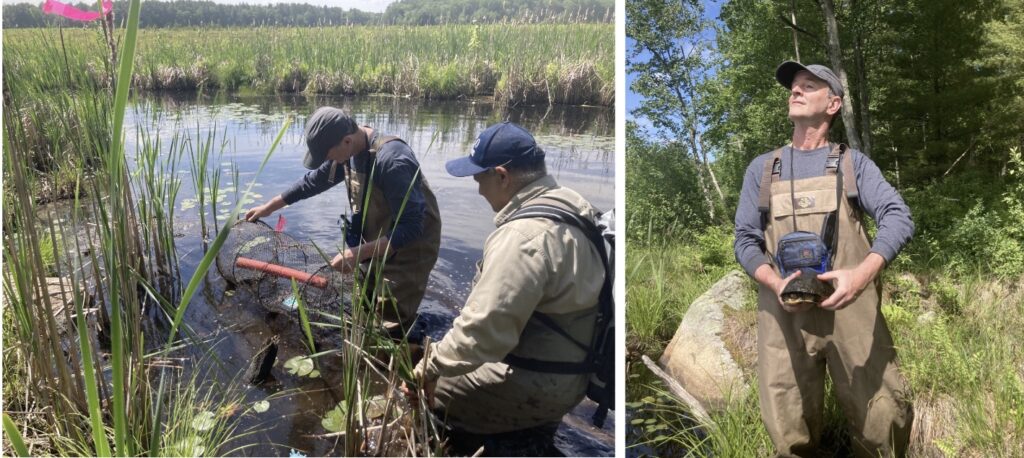
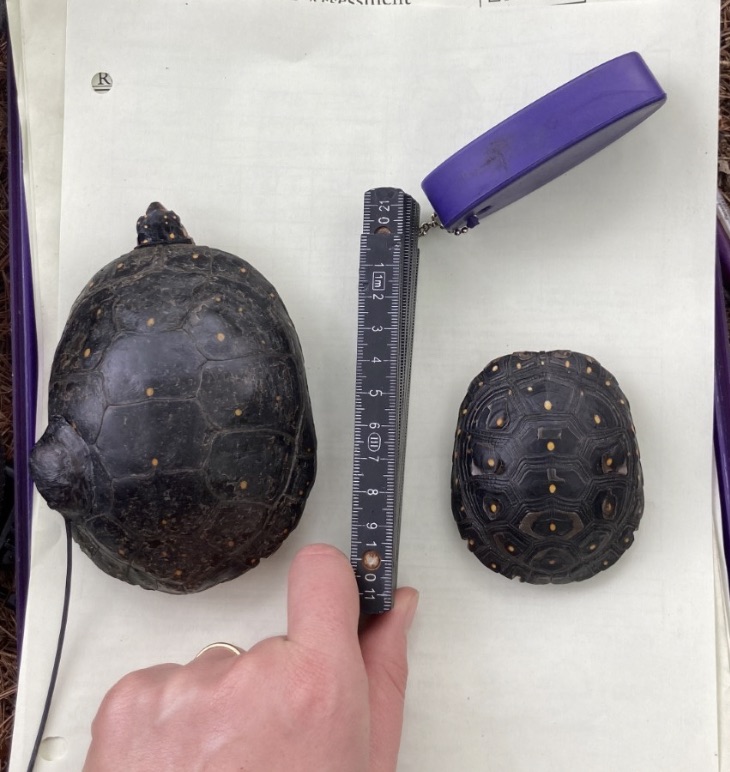
We collected data on over 20 Spotted Turtles and deployed radio trackers on six females. We kept a close eye on these females during this nesting season, with the aim of gathering valuable data on their nesting locations and movements which has never been collected on this species at this state park.
Of course, many other creatures can’t resist the allure of the sardine tin (yum)! We make sure to record all other species captured in the traps. Due to the nature of the netted trap, we need to carefully remove each creature by hand. Here are some of the highlights! What cuties.
